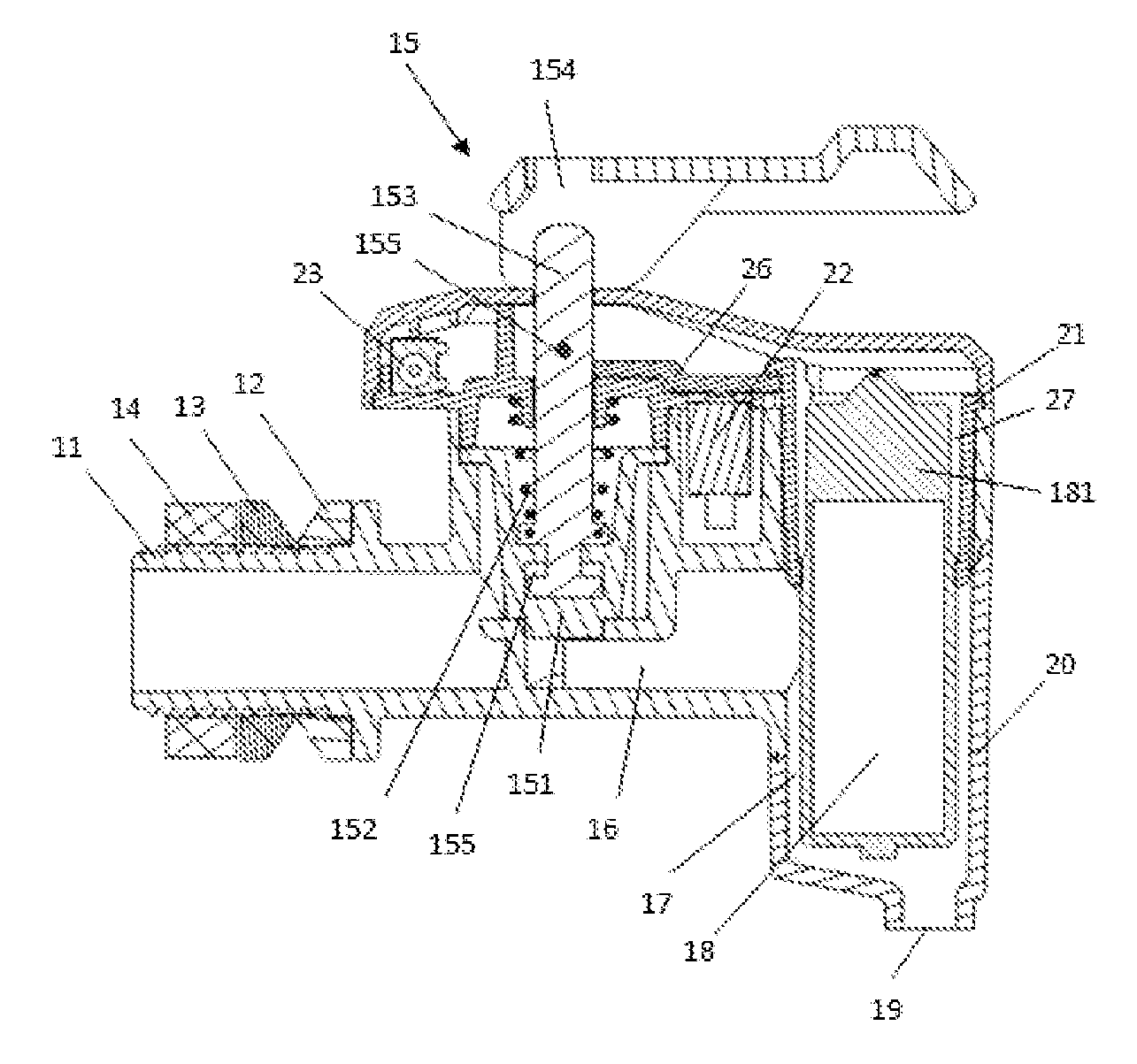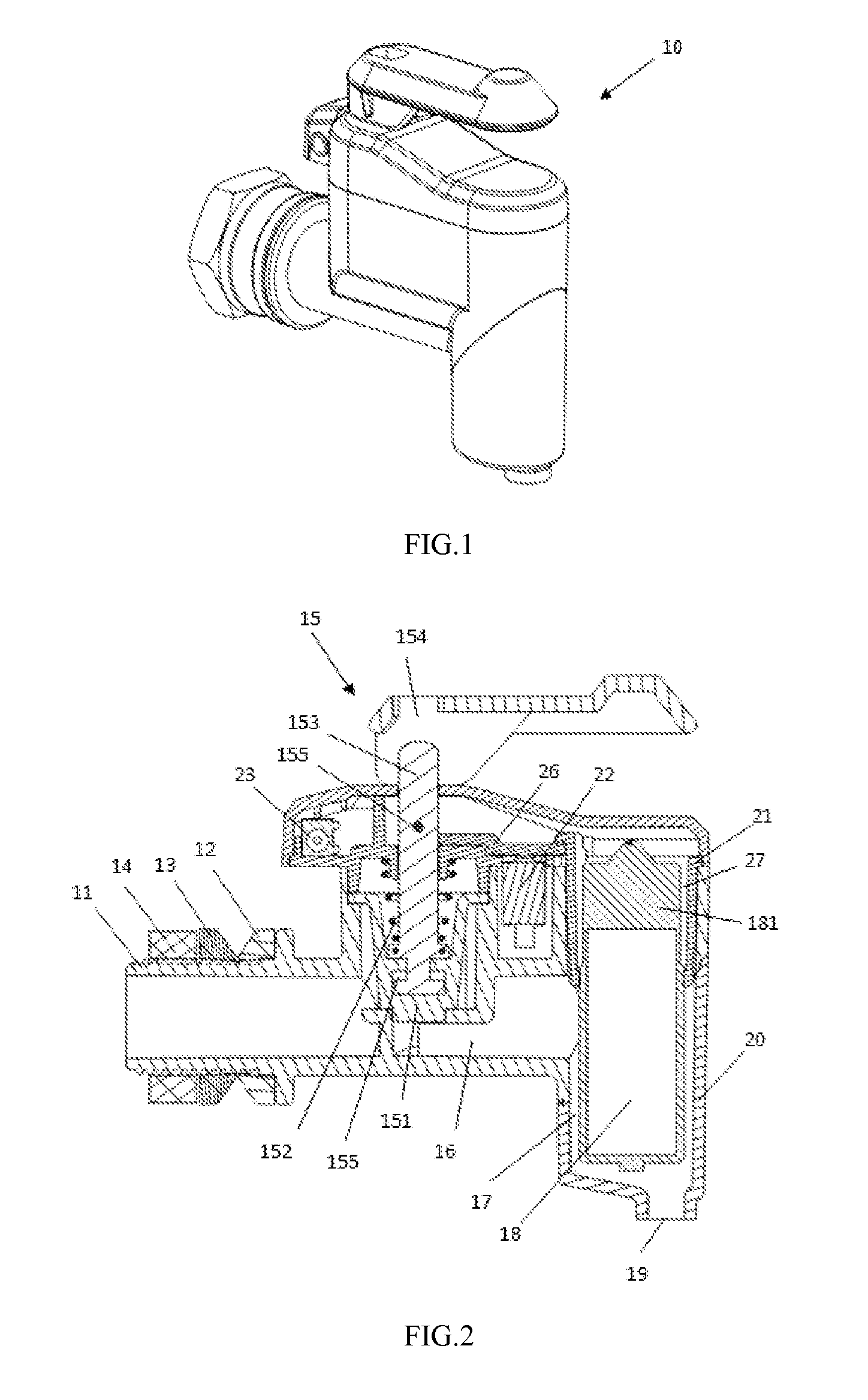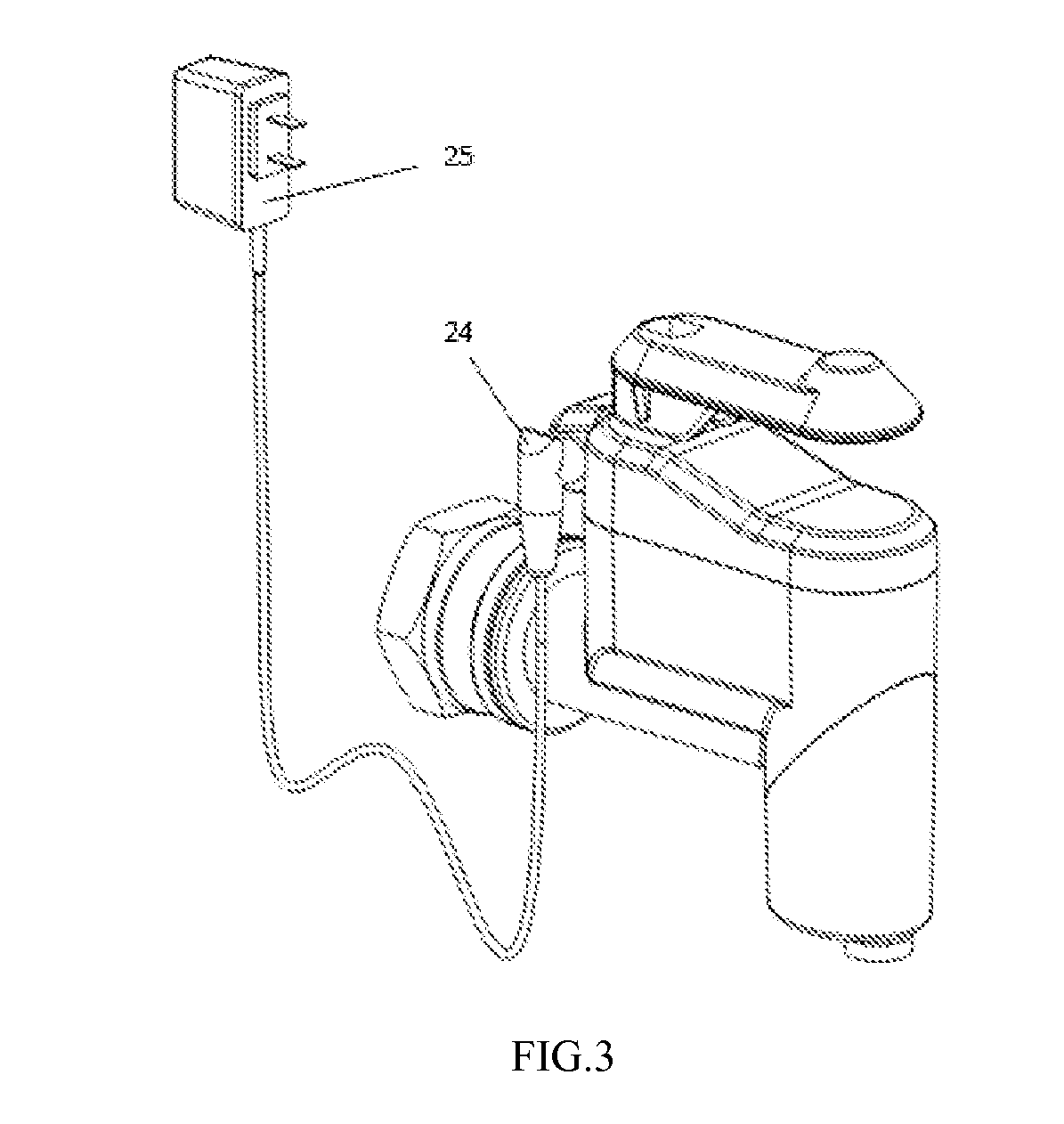UV water purification spigot
a technology of water purification spigot and uv light, which is applied in the direction of moving filter element filter, filtration separation, separation process, etc., can solve the problems of no faucet, heavy and cumbersome 5 gallon jug, no tap water, etc., and achieves low starting and running voltage, maintenance-free, and low cost.
- Summary
- Abstract
- Description
- Claims
- Application Information
AI Technical Summary
Benefits of technology
Problems solved by technology
Method used
Image
Examples
Embodiment Construction
[0029]The UV water purification spigot, indicated generally by the numeral 10, as seen in FIG. 1 and more specifically in FIG. 2; consists of a threaded inlet conduit 11, a valve mechanism indicated generally by the numeral 15, a disinfection chamber 17 containing an ultraviolet bulb 18 and an orifice outlet 19 through which a user gets disinfected and germicidally treated water.
[0030]The threaded inlet conduit 11 is a ¾ inch outside diameter conduit designed to be attached to any suitable container (not shown), provided such container has a matching ¾ inch hole where threaded conduit 11 can be inserted and attached safely by using the two gaskets 12 and 13. Gasket 12 is designed to be placed on the outside wall of the container while gasket 13 is placed on the inside wall of the container. Threaded nut 14 pressures gaskets 12 and 13 to ensure spigot 10 is tightly held to container while gaskets 12 and 13 provide a secure seal to avoid water leaks from container. The untreated water...
PUM
| Property | Measurement | Unit |
|---|---|---|
| volume | aaaaa | aaaaa |
| volume | aaaaa | aaaaa |
| distance | aaaaa | aaaaa |
Abstract
Description
Claims
Application Information
 Login to View More
Login to View More - R&D
- Intellectual Property
- Life Sciences
- Materials
- Tech Scout
- Unparalleled Data Quality
- Higher Quality Content
- 60% Fewer Hallucinations
Browse by: Latest US Patents, China's latest patents, Technical Efficacy Thesaurus, Application Domain, Technology Topic, Popular Technical Reports.
© 2025 PatSnap. All rights reserved.Legal|Privacy policy|Modern Slavery Act Transparency Statement|Sitemap|About US| Contact US: help@patsnap.com



